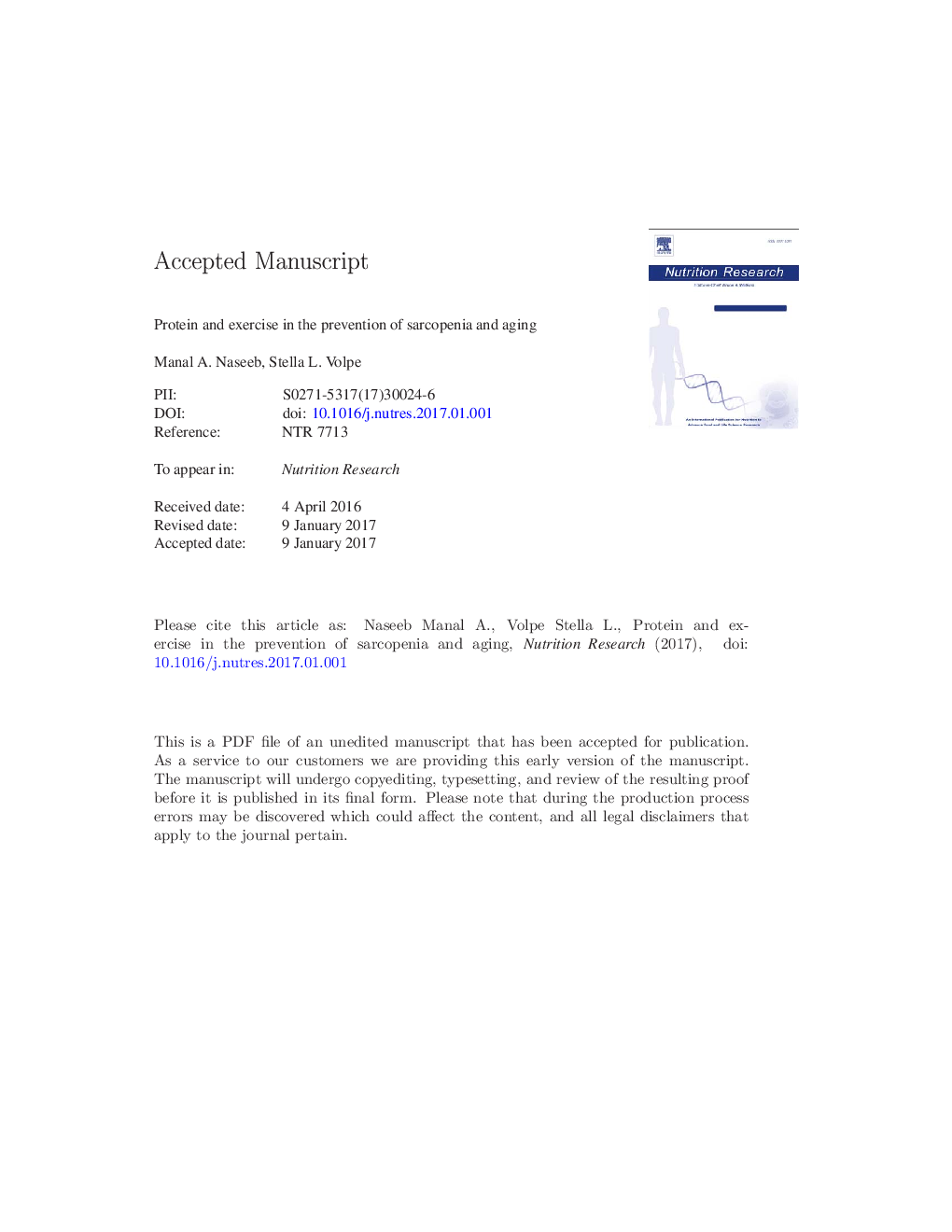| Article ID | Journal | Published Year | Pages | File Type |
|---|---|---|---|---|
| 5588622 | Nutrition Research | 2017 | 53 Pages |
Abstract
Aging is associated with a progressive decline in skeletal muscle mass and strength. The decline, known as sarcopenia, could lead to physical disability, poor quality of life, and death. In addition, the older population usually experiences age-related muscle changes that affect muscle mass, muscular strength, and functional abilities. The purpose of this review is to describe the role of protein and exercise in slowing the progression of sarcopenia. It will also discuss whether age-related changes can be attenuated by dietary protein and exercise in the older population. This review will also cover one of the possible mechanisms of how dietary protein and exercise are involved in sarcopenia prevention, as well as the available measurement tools. Based on the findings of this review, the adequate amount of protein required for older men and women needs to be revised and likely be higher. Moreover, studies are required to explore some inconclusive findings concerning sarcopenia in the older population. Further research is required to investigate the following: (1) the safety and effectiveness concerning the consumption of 1.4 g of protein/kg of body weight (or more) in this vulnerable population; (2) the effectiveness of amino acid supplementation in reducing progression of sarcopenia over time through longitudinal studies; (3) the preferred source and timing of protein for the older population to maintain muscular strength and attenuate sarcopenia; (4) exercise interventions, especially those of longer duration, in the attenuation of sarcopenia; (5) other types of exercise and their effects on age-related muscle changes; (6) the mechanism of how protein and exercise prevent muscle loss with aging; and (7) determine the best method to diagnose sarcopenia.
Keywords
DXA70-kDa ribosomal protein S6 kinaseEWGSOP1-RMALMmTORC1BIA4E-BP1SPPBPRTRDAmRNA1 repetition maximumResistance trainingprogressive resistance trainingCSAshort physical performance batterybioelectrical impedance analysisResistance exerciseAerobic exerciseappendicular lean masscomputed tomographydual-energy X-ray absorptiometrymessenger ribonucleic acidRecommended dietary allowanceMyosin heavy chainAgingMuscle protein synthesisPhysical activityMHCcross-sectional areaSupplementMPsMammalian target of rapamycin complex 1ProteinSarcopenia
Related Topics
Life Sciences
Biochemistry, Genetics and Molecular Biology
Endocrinology
Authors
Manal A. Naseeb, Stella L. Volpe,
